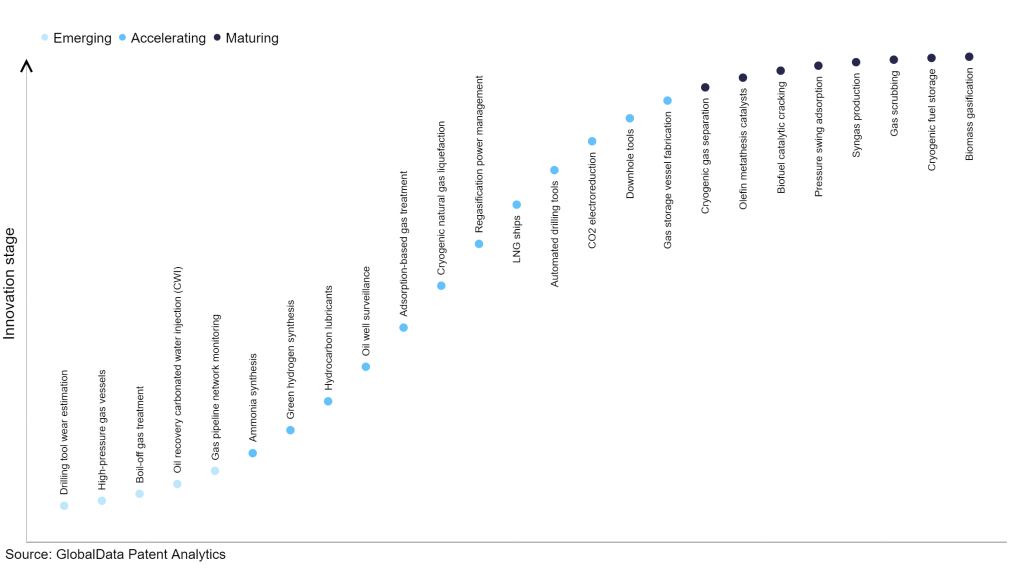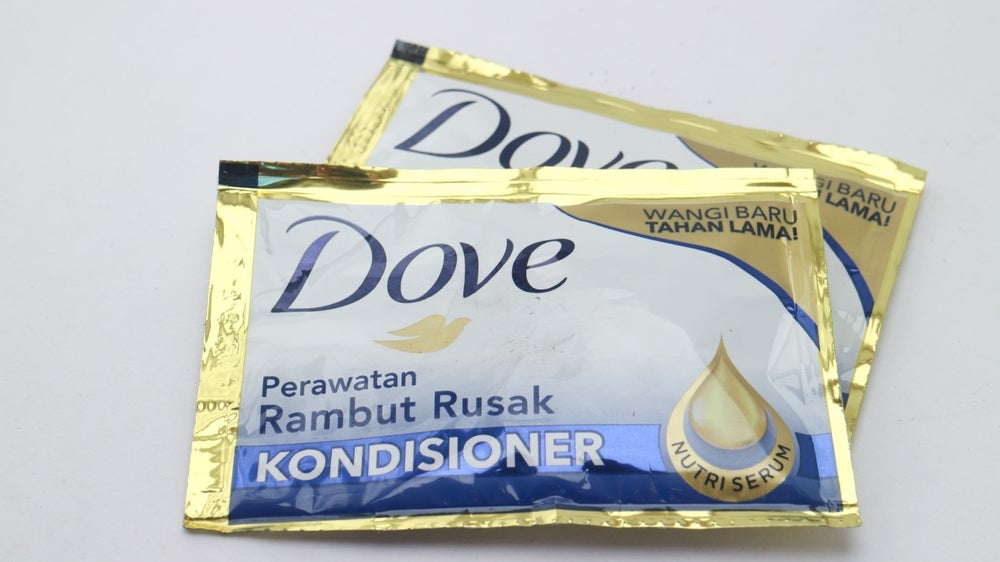The oil & gas industry continues to be a hotbed of patent innovation. Activity is driven by emission reduction regulations, air quality compliance, and operational efficiencies, and the growing importance of technologies such as digitalization, artificial intelligence, and machine learning. In the last three years alone, there have been over 523,000 patents filed and granted in the oil & gas industry, according to GlobalData’s report on Innovation in oil & gas: gas scrubbing. Buy the report here.
However, not all innovations are equal and nor do they follow a constant upward trend. Instead, their evolution takes the form of an S-shaped curve that reflects their typical lifecycle from early emergence to accelerating adoption, before finally stabilizing and reaching maturity.
Identifying where a particular innovation is on this journey, especially those that are in the emerging and accelerating stages, is essential for understanding their current level of adoption and the likely future trajectory and impact they will have.
60+ innovations will shape the oil & gas industry
According to GlobalData’s Technology Foresights, which plots the S-curve for the oil & gas industry using innovation intensity models built on over 196,000 patents, there are 60+ innovation areas that will shape the future of the industry.
Within the emerging innovation stage, high-pressure gas vessels, boil-off gas treatment, and oil recovery CWI are disruptive technologies that are in the early stages of application and should be tracked closely. Green hydrogen synthesis, hydrocarbon lubricants, and oil well surveillance are some of the accelerating innovation areas, where adoption has been steadily increasing. Among maturing innovation areas are cryogenic gas separation and olefin metathesis catalysts, which are now well established in the industry.
Innovation S-curve for the oil & gas industry

Gas scrubbing is a key innovation area in oil & gas
Gas scrubbing is a process used to remove acidic or other contaminants from gas streams by means of absorption into a liquid phase or adsorption onto solid surfaces. The method is used to purify gases including synthesis gas, natural gases, flue gases, and hydrogen gases.
GlobalData’s analysis also uncovers the companies at the forefront of each innovation area and assesses the potential reach and impact of their patenting activity across different applications and geographies. According to GlobalData, there are 110+ companies, spanning technology vendors, established oil & gas companies, and up-and-coming start-ups engaged in the development and application of gas scrubbing.
Key players in gas scrubbing – a disruptive innovation in the oil & gas industry
‘Application diversity’ measures the number of applications identified for each patent. It broadly splits companies into either ‘niche’ or ‘diversified’ innovators.
‘Geographic reach’ refers to the number of countries each patent is registered in. It reflects the breadth of geographic application intended, ranging from ‘global’ to ‘local’.
Patent volumes related to gas scrubbing
Source: GlobalData Patent Analytics
Linde is one of the leading patent filers in gas scrubbing. RECTISOL® is the company’s scrubbing process used in the upstream sector for the concurrent removal of sour gases such as hydrogen sulfide, carbon dioxide, and carbonyl sulfide in a single process. It uses organic solvent, commonly methanol, as an organic solvent under freezing conditions for gas removal. Some the other key patent filers for gas scrubbing include Air Liquide, Mitsubishi Heavy Industries, and Shell.
In terms of application diversity, Electricite de France leads the pack, while Hitachi Zosen, and 8 Rivers Capital stood in the second and third positions, respectively. By means of geographic reach, Pentair held the top position, followed by Arkema and JFE.
The growing emphasis on environmental compliance, emissions reduction, and enhanced operational efficiency has significantly heightened the importance of gas scrubbing in the oil and gas industry, underlining its pivotal role in addressing these pressing concerns.
To further understand the key themes and technologies disrupting the oil & gas industry, access GlobalData’s latest thematic research report on Oil & Gas.
Data Insights
From

The gold standard of business intelligence.
Blending expert knowledge with cutting-edge technology, GlobalData’s unrivalled proprietary data will enable you to decode what’s happening in your market. You can make better informed decisions and gain a future-proof advantage over your competitors.





